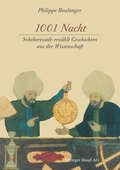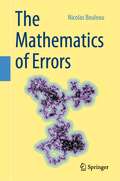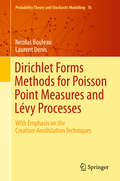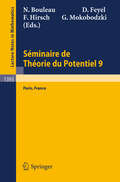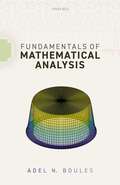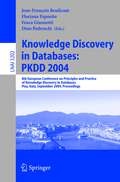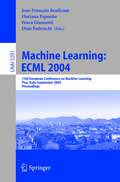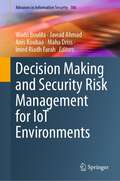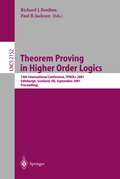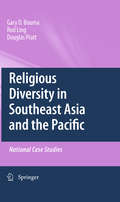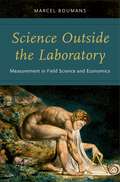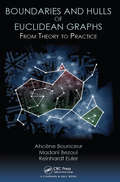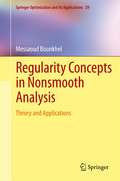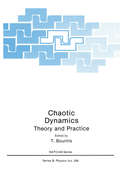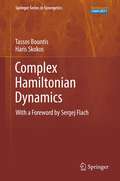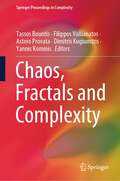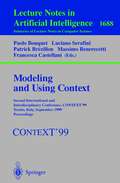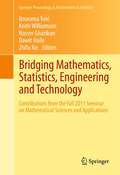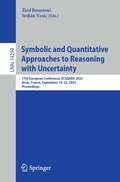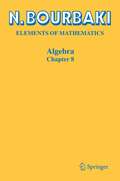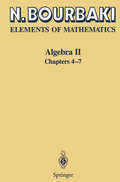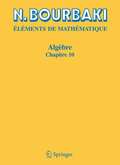- Table View
- List View
The Mathematics of Errors
by Nicolas BouleauThe Mathematics of Errors presents an original, rigorous and systematic approach to the calculus of errors, targeted at both the engineer and the mathematician. Starting from Gauss's original point of view, the book begins as an introduction suitable for graduate students, leading to recent developments in stochastic analysis and Malliavin calculus, including contributions by the author. Later chapters, aimed at a more mature audience, require some familiarity with stochastic calculus and Dirichlet forms. Sensitivity analysis, in particular, plays an important role in the book. Detailed applications in a range of fields, such as engineering, robotics, statistics, financial mathematics, climate science, or quantum mechanics are discussed through concrete examples. Throughout the book, error analysis is presented in a progressive manner, motivated by examples and appealing to the reader’s intuition. By formalizing the intuitive concept of error and richly illustrating its scope for application, this book provides readers with a blueprint to apply advanced mathematics in practical settings. As such, it will be of immediate interest to engineers and scientists, whilst providing mathematicians with an original presentation.Nicolas Bouleau has directed the mathematics center of the Ecole des Ponts ParisTech for more than ten years. He is known for his theory of error propagation in complex models. After a degree in engineering and architecture, he decided to pursue a career in mathematics under the influence of Laurent Schwartz. He has also written on the production of knowledge, sustainable economics and mathematical models in finance. Nicolas Bouleau is a recipient of the Prix Montyon from the French Academy of Sciences.
Risk and Meaning: Adversaries in Art, Science and Philosophy
by Nicolas BouleauThis richly illustrated book is an exploration of how chance and risk, on the one hand, and meaning or significance on the other, compete for the limelight in art, in philosophy, and in science. In modern society, prudence and probability calculation permeate our daily lives. Yet it is clear for all to see that neither cautious bank regulations nor mathematics have prevented economic crises from occurring time and again. Nicolas Bouleau argues that it is the meaning we assign to an event that determines the perceived risk, and that we generally turn a blind eye to this important fact, because the word "meaning" is itself awkward to explain. He tackles this fundamental question through examples taken from cultural fields ranging from painting, architecture, and music, to poetry, biology, and astronomy. This enables the reader to view overwhelming risks in a different light. Bouleau clarifies that the most important thing in a time of uncertainty is to think of prudence on a higher level, one that truly addresses the various subjective interpretations of the world.
Dirichlet Forms Methods for Poisson Point Measures and Lévy Processes: With Emphasis on the Creation-Annihilation Techniques (Probability Theory and Stochastic Modelling #76)
by Nicolas Bouleau Laurent DenisA simplified approach to Malliavin calculus adapted to Poisson random measures is developed and applied in this book. Called the “lent particle method” it is based on perturbation of the position of particles. Poisson random measures describe phenomena involving random jumps (for instance in mathematical finance) or the random distribution of particles (as in statistical physics). Thanks to the theory of Dirichlet forms, the authors develop a mathematical tool for a quite general class of random Poisson measures and significantly simplify computations of Malliavin matrices of Poisson functionals. The method gives rise to a new explicit calculus that they illustrate on various examples: it consists in adding a particle and then removing it after computing the gradient. Using this method, one can establish absolute continuity of Poisson functionals such as Lévy areas, solutions of SDEs driven by Poisson measure and, by iteration, obtain regularity of laws. The authors also give applications to error calculus theory. This book will be of interest to researchers and graduate students in the fields of stochastic analysis and finance, and in the domain of statistical physics. Professors preparing courses on these topics will also find it useful. The prerequisite is a knowledge of probability theory.
Séminaire de Théorie du Potentiel Paris, No. 9 (Lecture Notes in Mathematics #1393)
by Nicolas Bouleau Denis Feyel Francis Hirsch Gabriel MokobodzkiFundamentals of Mathematical Analysis
by Adel N. BoulesFundamentals of Mathematical Analysis explores real and functional analysis with a substantial component on topology. The three leading chapters furnish background information on the real and complex number fields, a concise introduction to set theory, and a rigorous treatment of vector spaces. Fundamentals of Mathematical Analysis is an extensive study of metric spaces, including the core topics of completeness, compactness and function spaces, with a good number of applications. The later chapters consist of an introduction to general topology, a classical treatment of Banach and Hilbert spaces, the elements of operator theory, and a deep account of measure and integration theories. Several courses can be based on the book. This book is suitable for a two-semester course on analysis, and material can be chosen to design one-semester courses on topology or real analysis. It is designed as an accessible classical introduction to the subject and aims to achieve excellent breadth and depth and contains an abundance of examples and exercises. The topics are carefully sequenced, the proofs are detailed, and the writing style is clear and concise. The only prerequisites assumed are a thorough understanding of undergraduate real analysis and linear algebra, and a degree of mathematical maturity.
Knowledge Discovery in Databases: 8th European Conference on Principles and Practice of Knowledge Discovery in Databases, Pisa, Italy, September 20-24, 2004, Proceedings (Lecture Notes in Computer Science #3202)
by Jean-François Boulicaut Floriana Esposito Fosca Giannotti Dino PedreschiMachine Learning: 15th European Conference on Machine Learning, Pisa, Italy, September 20-24, 2004, Proceedings (Lecture Notes in Computer Science #3201)
by Jean-François Boulicaut Floriana Esposito Fosca Giannotti Dino PedreschiDecision Making and Security Risk Management for IoT Environments (Advances in Information Security #106)
by Wadii Boulila Jawad Ahmad Anis Koubaa Maha Driss Imed Riadh FarahThis book contains contemporary research that outlines and addresses security, privacy challenges and decision-making in IoT environments. The authors provide a variety of subjects related to the following Keywords: IoT, security, AI, deep learning, federated learning, intrusion detection systems, and distributed computing paradigms. This book also offers a collection of the most up-to-date research, providing a complete overview of security and privacy-preserving in IoT environments. It introduces new approaches based on machine learning that tackles security challenges and provides the field with new research material that’s not covered in the primary literature. The Internet of Things (IoT) refers to a network of tiny devices linked to the Internet or other communication networks. IoT is gaining popularity, because it opens up new possibilities for developing many modern applications. This would include smart cities, smart agriculture, innovative healthcare services and more. The worldwide IoT market surpassed $100 billion in sales for the first time in 2017, and forecasts show that this number might reach $1.6 trillion by 2025. However, as IoT devices grow more widespread, threats, privacy and security concerns are growing. The massive volume of data exchanged highlights significant challenges to preserving individual privacy and securing shared data. Therefore, securing the IoT environment becomes difficult for research and industry stakeholders.Researchers, graduate students and educators in the fields of computer science, cybersecurity, distributed systems and artificial intelligence will want to purchase this book. It will also be a valuable companion for users and developers interested in decision-making and security risk management in IoT environments.
Theorem Proving in Higher Order Logics: 14th International Conference, TPHOLs 2001, Edinburgh, Scotland, UK, September 3-6, 2001. Proceedings (Lecture Notes in Computer Science #2152)
by Richard J. Boulton Paul B. JacksonThis volume constitutes the proceedings of the 14th International Conference on Theorem Proving in Higher Order Logics (TPHOLs 2001) held 3–6 September 2001 in Edinburgh, Scotland. TPHOLs covers all aspects of theorem proving in higher order logics, as well as related topics in theorem proving and veri?cation. TPHOLs 2001 was collocated with the 11th Advanced Research Working Conference on Correct Hardware Design and Veri?cation Methods (CHARME 2001). This was held 4–7 September 2001 in nearby Livingston, Scotland at the Institute for System Level Integration, and a joint half-day session of talks was arranged for the 5th September in Edinburgh. An excursion to Traquair House and a banquet in the Playfair Library of Old College, University of Edinburgh were also jointly organized. The proceedings of CHARME 2001 have been p- lished as volume 2144 of Springer-Verlag’s Lecture Notes in Computer Science series, with Tiziana Margaria and Tom Melham as editors. Each of the 47 papers submitted in the full research category was refereed by at least 3 reviewers who were selected by the Program Committee. Of these submissions, 23 were accepted for presentation at the conference and publication in this volume. In keeping with tradition, TPHOLs 2001 also o?ered a venue for the presentation of work in progress, where researchers invite discussion by means of a brief preliminary talk and then discuss their work at a poster session. A supplementary proceedings containing associated papers for work in progress was published by the Division of Informatics at the University of Edinburgh.
Religious Diversity in Southeast Asia and the Pacific: National Case Studies
by Gary D. Bouma Rodney Ling Douglas PrattReligious diversity is now a social fact in most countries of the world. While reports of the impact of religious diversity on Europe and North America are reasonably well-known, the ways in which Southeast Asia and Asia Pacific are religiously diverse and the ways this diversity has been managed are not. This book addresses this lack of information about one of the largest and most diverse regions of the world. It describes the religious diversity of 27 nations, as large and complex as Indonesia and as small as Tuvalu, outlining the current issues and the basic policy approaches to religious diversity. Southeast Asia and the Pacific Islands are portrayed as a living laboratory of various religious blends, with a wide variance of histories and many different approaches to managing religious diversity. While interesting in their own right, a study of these nations provides a wealth of case studies of diversity management – most of them stories of success and inclusion.
Science Outside the Laboratory: Measurement in Field Science and Economics
by Marcel BoumansThe conduct of most of social science occurs outside the laboratory. Such studies in field science explore phenomena that cannot for practical, technical, or ethical reasons be explored under controlled conditions. These phenomena cannot be fully isolated from their environment or investigated by manipulation or intervention. Yet measurement, including rigorous or clinical measurement, does provide analysts with a sound basis for discerning what occurs under field conditions, and why. In Science Outside the Laboratory, Marcel Boumans explores the state of measurement theory, its reliability, and the role expert judgment plays in field investigations from the perspective of the philosophy of science. Its discussion of the problems of passive observation, the calculus of observation, the two-model problem, and model-based consensus uses illustrations drawn primarily from economics. Rich in research and discussion, the volume clarifies the extent to which measurement provides valid information about objects and events in field sciences, but also has implications for measurement in the laboratory. Scholars in the fields of philosophy of science, social science, and economics will find Science Outside the Laboratory a compelling and informative read.
Science Outside the Laboratory: Measurement in Field Science and Economics
by Marcel BoumansThe conduct of most of social science occurs outside the laboratory. Such studies in field science explore phenomena that cannot for practical, technical, or ethical reasons be explored under controlled conditions. These phenomena cannot be fully isolated from their environment or investigated by manipulation or intervention. Yet measurement, including rigorous or clinical measurement, does provide analysts with a sound basis for discerning what occurs under field conditions, and why. In Science Outside the Laboratory, Marcel Boumans explores the state of measurement theory, its reliability, and the role expert judgment plays in field investigations from the perspective of the philosophy of science. Its discussion of the problems of passive observation, the calculus of observation, the two-model problem, and model-based consensus uses illustrations drawn primarily from economics. Rich in research and discussion, the volume clarifies the extent to which measurement provides valid information about objects and events in field sciences, but also has implications for measurement in the laboratory. Scholars in the fields of philosophy of science, social science, and economics will find Science Outside the Laboratory a compelling and informative read.
Boundaries and Hulls of Euclidean Graphs: From Theory to Practice
by Ahcene Bounceur Madani Bezoui Reinhardt EulerBoundaries and Hulls of Euclidean Graphs: From Theory to Practice presents concepts and algorithms for finding convex, concave and polygon hulls of Euclidean graphs. It also includes some implementations, determining and comparing their complexities. Since the implementation is application-dependent, either centralized or distributed, some basic concepts of the centralized and distributed versions are reviewed. Theoreticians will find a presentation of different algorithms together with an evaluation of their complexity and their utilities, as well as their field of application. Practitioners will find some practical and real-world situations in which the presented algorithms can be used.
Boundaries and Hulls of Euclidean Graphs: From Theory to Practice
by Ahcene Bounceur Madani Bezoui Reinhardt EulerBoundaries and Hulls of Euclidean Graphs: From Theory to Practice presents concepts and algorithms for finding convex, concave and polygon hulls of Euclidean graphs. It also includes some implementations, determining and comparing their complexities. Since the implementation is application-dependent, either centralized or distributed, some basic concepts of the centralized and distributed versions are reviewed. Theoreticians will find a presentation of different algorithms together with an evaluation of their complexity and their utilities, as well as their field of application. Practitioners will find some practical and real-world situations in which the presented algorithms can be used.
Regularity Concepts in Nonsmooth Analysis: Theory and Applications (Springer Optimization and Its Applications #59)
by Messaoud BounkhelThe results presented in this book are a product of research conducted by the author independently and in collaboration with other researchers in the field. In this light, this work encompasses the most recent collection of various concepts of regularity and nonsmooth analysis into one monograph. The first part of the book attempts to present an accessible and thorough introduction to nonsmooth analysis theory. Main concepts and some useful results are stated and illustrated through examples and exercises. The second part gathers the most prominent and recent results of various regularity concepts of sets, functions, and set-valued mappings in nonsmooth analysis. The third and final section contains six different application, with comments in relation to the existing literature.
Chaotic Dynamics: Theory and Practice (Nato Science Series B: #298)
by T. BountisMany conferences, meetings, workshops, summer schools and symposia on nonlinear dynamical systems are being organized these days, dealing with a great variety of topics and themes -classical and quantum, theoretical and experimental. Some focus on integrability, or discuss the mathematical foundations of chaos. Others explore the beauty of fractals, or examine endless possibilities of applications to problems of physics, chemistry, biology and other sciences. A new scientific discipline has thus emerged, with its own distinct philosophical viewpoint and an impressive arsenal of new methods and techniques, which may be called Chaotic Dynamics. Perhaps its most outstanding achievement so far has been to shed new light on many long standing issues involving complicated, irregular or "chaotic" nonlinear phenomena. The concepts of randomness, complexity and unpredictability have been critically re-examined and the fundamental importance of scaling, self-similarity and sensitive dependence on parameters and initial conditions has been firmly established. In this NATO ASI, held at the seaside Greek city of Patras, between July 11- 20, 1991, a serious effort was made to bring together scientists representing many of the different aspects of Chaotic Dynamics. Our main aim was to review recent advances, evaluate the current state of the art and identify some of the more promising directions for research in Chaotic Dynamics.
Complex Hamiltonian Dynamics (Springer Series in Synergetics #10)
by Tassos Bountis Haris SkokosThis book introduces and explores modern developments in the well established field of Hamiltonian dynamical systems. It focuses on high degree-of-freedom systems and the transitional regimes between regular and chaotic motion. The role of nonlinear normal modes is highlighted and the importance of low-dimensional tori in the resolution of the famous FPU paradox is emphasized. Novel powerful numerical methods are used to study localization phenomena and distinguish order from strongly and weakly chaotic regimes. The emerging hierarchy of complex structures in such regimes gives rise to particularly long-lived patterns and phenomena called quasi-stationary states, which are explored in particular in the concrete setting of one-dimensional Hamiltonian lattices and physical applications in condensed matter systems. The self-contained and pedagogical approach is blended with a unique balance between mathematical rigor, physics insights and concrete applications. End of chapter exercises and (more demanding) research oriented problems provide many opportunities to deepen the reader’s insights into specific aspects of the subject matter.Addressing a broad audience of graduate students, theoretical physicists and applied mathematicians, this text combines the benefits of a reference work with those of a self-study guide for newcomers to the field.
Chaos, Fractals and Complexity (Springer Proceedings in Complexity)
by Tassos Bountis Filippos Vallianatos Astero Provata Dimitris Kugiumtzis Yannis KominisThis volume of proceedings contains research results within the framework of the fields of Chaos, Fractals and Complexity, written by experienced professors, young researchers, and applied scientists. It includes reviews of the fields, which are presented in an educational way for the widest possible audience, analytical results, computer simulations and experimental evidence, focusing on mathematical modelling. The papers presented here are selected from lectures given at the 28th Summer School “Dynamical Systems and Complexity”, July 18 – 27, 2022. Topics cover applications of complex systems in Neuroscience, Biology, Photonics, Seismology, Meteorology, and more broadly Physical and Engineering systems. The summer school has a long history, which began at the University of Patras in 1987 and continues with great success to this day. The original main purpose was to introduce young students and researchers of Greece to a new science that emerged several decades ago and continues to grow internationally at an ever increasing rate around the world.
Modeling and Using Context: Second International and Interdisciplinary Conference, CONTEXT'99, Trento, Italy, September 9-11, 1999, Proceedings (Lecture Notes in Computer Science #1688)
by Paolo Bouquet Luciano Serafini Patrick Brézillon Massimo Benerecetti Francesca CastellaniThis volume contains the papers presented at the Second International and - terdisciplinary Conference on Modeling and Using Context (CONTEXT’99), held in Trento (Italy) from 9 to 11 September 1999. CONTEXT’99 is the second in the CONTEXT series. The rst was held in Rio de Janeiro (Brazil) in 1997. The CONTEXT conference series is meant to provide an interdisciplinary - rum where researchers can exchange ideas, methodologies, and results on c- text, and is increasingly becoming an important reference for all people doing research on context. This is testi ed by the larger number of research areas that are represented at CONTEXT’99 (in particular, Philosophy and Cognitive Psychology were not signi cantly present at the rst conference), and by the number and quality of submitted papers. Speci cally, we received 118 papers, mostly of good or excellent quality. Among them, 33 (28%) have been accepted as full papers, and 21 as short papers. We think it is fair to say that the 54 papers collected in this volume provide a signi cant picture of the international research on context currently going on. The notion of context plays an important role in many areas, both theoretical and applied, such as Formal Logic, Arti cial Intelligence, Philosophy, Pragm- ics, Computational Linguistics, Computer Science, Cognitive Psychology.
Bridging Mathematics, Statistics, Engineering and Technology: Contributions from the Fall 2011 Seminar on Mathematical Sciences and Applications (Springer Proceedings in Mathematics & Statistics #24)
by Bourama Toni, Keith Williamson, Nasser Ghariban, Dawit Haile and Zhifu XieThis volume contains the invited contributions from talks delivered in the Fall 2011 series of the Seminar on Mathematical Sciences and Applications 2011 at Virginia State University. Contributors to this volume, who are leading researchers in their fields, present their work in a way to generate genuine interdisciplinary interaction. Thus all articles therein are selective, self-contained, and are pedagogically exposed and help to foster student interest in science, technology, engineering and mathematics and to stimulate graduate and undergraduate research and collaboration between researchers in different areas. This work is suitable for both students and researchers in a variety of interdisciplinary fields namely, mathematics as it applies to engineering, physical-chemistry, nanotechnology, life sciences, computer science, finance, economics, and game theory.
Symbolic and Quantitative Approaches to Reasoning with Uncertainty: 17th European Conference, ECSQARU 2023, Arras, France, September 19–22, 2023, Proceedings (Lecture Notes in Computer Science #14294)
by Zied Bouraoui Srdjan VesicThis book constitutes the refereed proceedings of the 17th European Conference on Symbolic and Quantitative Approaches to Reasoning with Uncertainty, ECSQARU 2023, held in Arras, France, in September 2023. The 35 full papers presented in this volume were carefully reviewed and selected from 46 submissions. The papers are organized in topical sections about Complexity and Database Theory; Formal Concept Analysis: Theoretical Advances; Formal Concept Analysis: Applications; Modelling and Explanation; Semantic Web and Graphs; Posters.
Algebra: Chapter 8
by N. BourbakiThis book is an English translation of an entirely revised version of the 1958 edition of the eighth chapter of the book Algebra, the second Book of the Elements of Mathematics.It is devoted to the study of certain classes of rings and of modules, in particular to the notions of Noetherian or Artinian modules and rings, as well as that of radical.This chapter studies Morita equivalence of module and algebras, it describes the structure of semisimple rings. Various Grothendieck groups are defined that play a universal role for module invariants.The chapter also presents two particular cases of algebras over a field. The theory of central simple algebras is discussed in detail; their classification involves the Brauer group, of which severaldescriptions are given. Finally, the chapter considers group algebras and applies the general theory to representations of finite groups.At the end of the volume, a historical note taken from the previous edition recounts the evolution of many of the developed notions.
Algebra II: Chapters 4 - 7 (Elements Of Mathematics Ser.)
by N. BourbakiThis is a softcover reprint of chapters four through seven of the 1990 English translation of the revised and expanded version of Bourbaki’s Algebre. Much material was added or revised for this edition, which thoroughly establishes the theories of commutative fields and modules over a principal ideal domain.
Algèbre: Chapitre 10. Algèbre homologique
by N. BourbakiLes Éléments de mathématique de Nicolas Bourbaki ont pour objet une présentation rigoureuse, systématique et sans prérequis des mathématiques depuis leurs fondements. Ce dixième chapitre du Livre d’Algèbre, deuxième Livre du traité, pose les bases du calcul homologique. Ce volume est a été publié en 1980.
